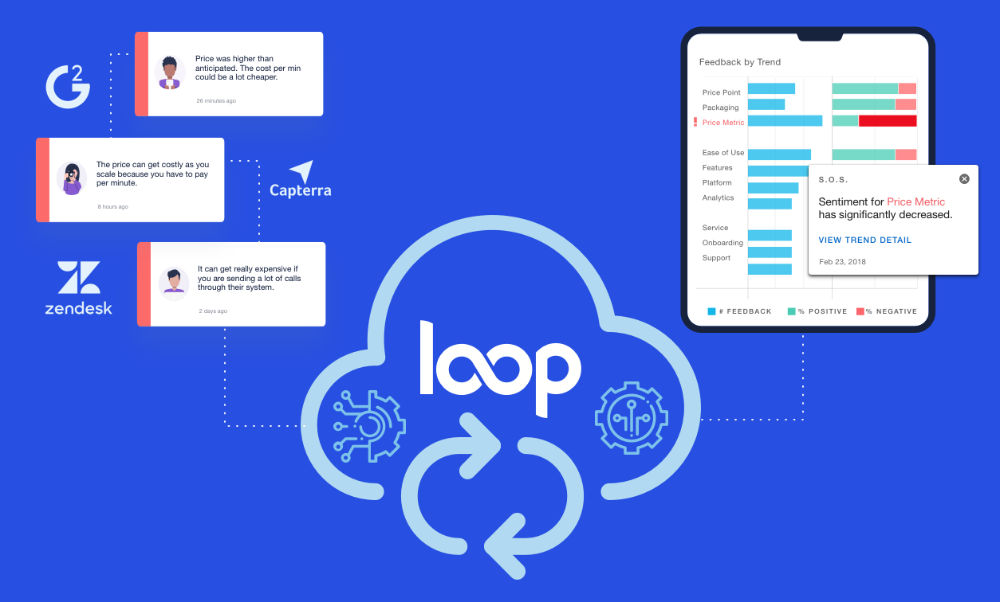Home » Achieving Greater Impact with Product Marketing Clarity
Achieving Greater Impact with Product Marketing Clarity
Madeline Turner

95% of Product Marketers reported that one of the biggest challenges they face is a lack of understanding of the role. The more conversations we have with Product Marketers, the more we understand how ill-defined the role really is across B2B SaaS organizations.
This lack of clarity is a roadblock to product marketers doing their best work.
If the role and contribution of Product Marketing are not clearly defined and understood across the business, opportunity is left on the table.
Let’s start by defining “what is product marketing?”
Product Marketing is a hyper cross-functional role that works with teams across the business to set strategy, drive and protect revenue, and represent the voices of their customers and market.
Product Marketers are the connectors of business strategy and customer needs.
In the best organizations, Product Marketers work in partnership with Success, Sales, Product, and Finance to ensure that the services, products, and offers align with customer and business needs.
- They conduct customer and market research to identify the greatest needs and opportunities
- They work with Product to ensure that roadmap priorities align with what the market is asking for
- They work with Finance to build pricing models and packages to create value-based offers
- They work with Sales to ensure they have the story and positioning needed to sell and compete
- They work with Success to create processes and listening posts to ensure that value sold equals value delivered
But if there is not a clear understanding of Product Marketing’s role in developing, launching, and refining business strategies across the organization, their responsibilities become more about tactics than strategy.
If the scope of their responsibility is limited to content creation and sales decks, businesses miss out on the opportunity to keep customers at the center of growth strategies.
What Can Product Marketers do to define their role and contribution within their organization?
Getting clarity and understanding will require several key things:
- Leadership buy-in
- An emphasis on cross-functional collaboration
- Deep understanding of customer needs
- Decision-making power
- Clear and measurable OKRs
Securing leadership buy-in
Gaining buy-in and support of senior leadership is both a major pain point and opportunity for advancing Product Marketing. Without trust and investment from Senior Leadership, it’s nearly impossible for Product Marketers to drive impact.
What will it take for Product Marketers to gain trust and investment?
The most actionable way to achieve this is through customer data and revenue impact.
By using qualitative and quantitative data to demonstrate risks and opportunities, tied to what senior leadership cares about most (business revenue goals), Product Marketers can shed light on the most critical risks and opportunities to the business.
Use data to show things like:
- Greatest risks to revenue
- Biggest drivers of churn
- Contributors to lost deals
- Biggest drivers of customer value
- White space/market opportunity
This will require Product Marketers to gather data from things like NPS, CSAT, Win/Loss notes, Customer Interviews, Support Tickets, Feature Requests, and context from front-line conversations. And then turn this qualitative data into quantitative insights.
Using these insights to make strategic recommendations about what to build and how to grow, and the role that you want to play in ensuring the execution of these strategies, will help leadership understand and champion your value within the organization.
Prioritizing cross-functional collaboration
As a cross-functional connector, Product Marketers’ success depends on the relationships they build and collaboration they foster with other department stakeholders. The work that you do is only powerful when acted upon by the departments that you support.
Too often, we hear that there is resistance to collaboration. Product Marketers aren’t given a seat early enough in the product development process, they’re seen only as playing a supporting role to sales rather than a driver of positioning and enablement, or there’s resistance to share customer feedback data because of claimed ownership.
All of this makes doing right by the customers, the market, and the business nearly impossible.
Removing this red tape from collaboration requires an emphasis on relationship and trust building. Product Marketers have to be masters at communication and invest deeply in shared success and responsibility.
This is not about diminishing the value of others’ work. It’s about developing a mutual understanding that more can be achieved by working together.
As a Product Marketer, you have to understand that you are accountable for the success of other departments — driving pipeline, closing deals, preventing churn, and keeping customers happy.
These shared goals and outcomes are the foundation for good collaboration.
- Set up recurring meetings with your cross-functional partners
- Understand their goals and how you contribute to achieving those goals
- Define early what it looks like to work together – when, how, where do you want to be involved
- Make your expectations for collaboration clear – what’s needed to drive meaningful impact and action
Developing a deep understanding of customer needs
One of the most critical components of a Product Marketer’s job is to represent the voice of customers and the market. This is difficult to do without defined processes for ongoing listening.
This data and deep understanding of customer needs is what defines great Product Marketers — they know who their customers are, what they want, what they need, and how to bring the wanted solutions to market.
To get this complete picture, Product Marketers have to think beyond just surveys and bring together all of the feedback customers are sharing across their journey. From frontline feedback to conversations within online communities.
By bringing together a holistic view of customer and market feedback, Product Marketers are more equipped to offer customer-led guidance for growth strategies across the organization.
Understanding where and how customer feedback is being gathered across the organization will require cross-functional collaboration and buy-in, but it is the Product Marketer’s responsibility to lead this.
- What surveys are sent out by each department and how often (and what questions are being asked)?
- How is feedback being collected and communicated from front-line sales reps, support agents, and customer success managers?
- Where are customers and prospects convening online and how are trends in these conversations being bubbled up by priority?
- How often are customer interviews being conducted?
- What are the biggest issues coming through support tickets?
- What does usage data indicate about the experience in-product?
- What are the biggest obstacles coming up in win/loss interviews?
This can turn into an overwhelming amount of contextual data. Without the ability to turn this quantitative feedback into qualitative data, it’s difficult to get teams on the same page on what actions to take.
This is a huge opportunity for Product Marketers to turn hypotheses about things that may be wrong into concrete, indisputable data.
Too often, teams aren’t on the same page about what customers need. Until Product Marketers bring everyone together around one source of truth, it’s an uphill battle to do right by customers.
Getting decision-making power
Whether it is a seat at the table early in the product development process or managing the customer lifecycle from onboarding to churn prevention, Product Marketers’ responsibility should be more than just playing a supporting role.
Armed with a deep understanding of customers, their role is to incorporate customer insights into every initiative that impacts the customer’s experience — this could mean positioning, product, pricing, or onboarding strategies.
Influencing and driving decisions that impact customers across the lifecycle can’t happen without leadership buy-in, collaboration, and customer data. Assuming this leadership role isn’t something granted by a title — it’s earned with a track record of driving measurable growth and customer satisfaction.
Start the conversations with your manager early to ensure that your priorities and performance will be dictated and measured based on the company’s key priorities. If the work that is expected of you is not tied to the company’s growth plans, your first step is to ask for the opportunity to create a trial initiative.
We work with a B2B SaaS Product Marketer that was struggling to bring teams together around the customer. This individual was left out of conversations regarding Product Roadmap and Success strategies. She got permission to run a test initiative. She started by gathering data to influence roadmap decisions and hosting Voice of Customer meetings to ensure alignment around the customer.
In a few months, trust has been built. She’s helped change how roadmap decisions are made. And she’s beginning to work with other teams across the business to influence strategy. The impact of this initiative has gained the attention of the CEO and she is now meeting with the CEO to talk about the insights she’s gathering and the biggest risks and opportunities she sees facing the business.
If you don’t have a seat at the table to drive decisions right now, that doesn’t mean you can’t get there. Start small, demonstrate results, and ask for more.
Tracking impact with clear and measurable OKRs
It’s surprising how often we hear PMKs asking about the best ways to measure their impact and performance. This is rooted in the inconsistency of how the role is treated across the industry.
A recent study showed that PMKs are most often measured by the following:
- Generation of revenue
- Increasing marketing qualified leads
- Up-sell customers
- Retaining customers
- Increase win-rate
- Cross-sell customers
- Sales confidence
- Active users
- Increase web traffic
- Asset Utilization
- Trial sign-ups
- Customer Satisfaction scores
From revenue generation to satisfaction scores, Product Marketer’s are measured on their ability to drive, expand, and keep revenue. While the tactics — like sales decks and marketing collateral — are essential, it’s important that your goals are tied to the outcomes and not the tasks.
When we can clearly define “what is product marketing” we eliminate the ambiguity and start to treat Product Marketing as the brains and customer-led growth engine that it truly is.




